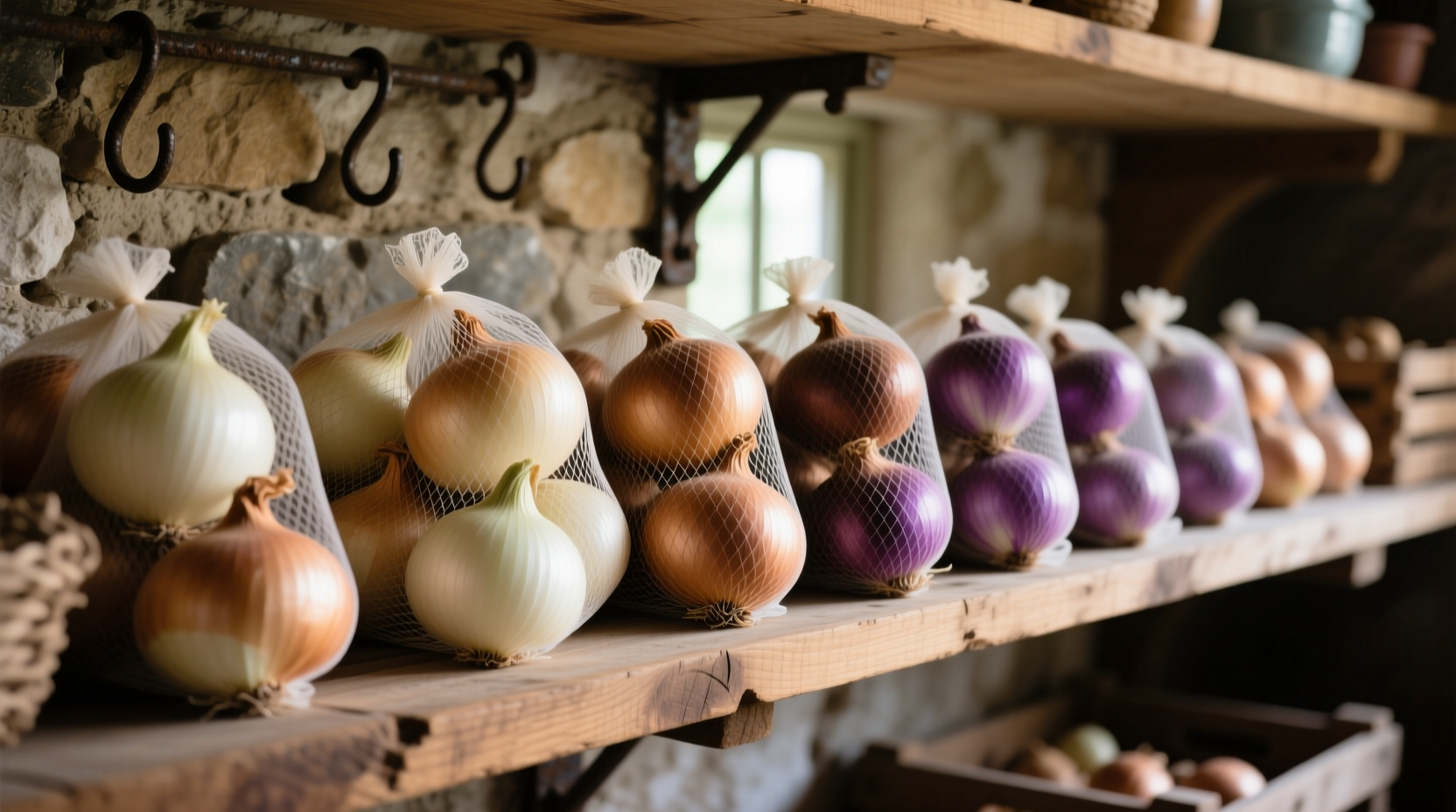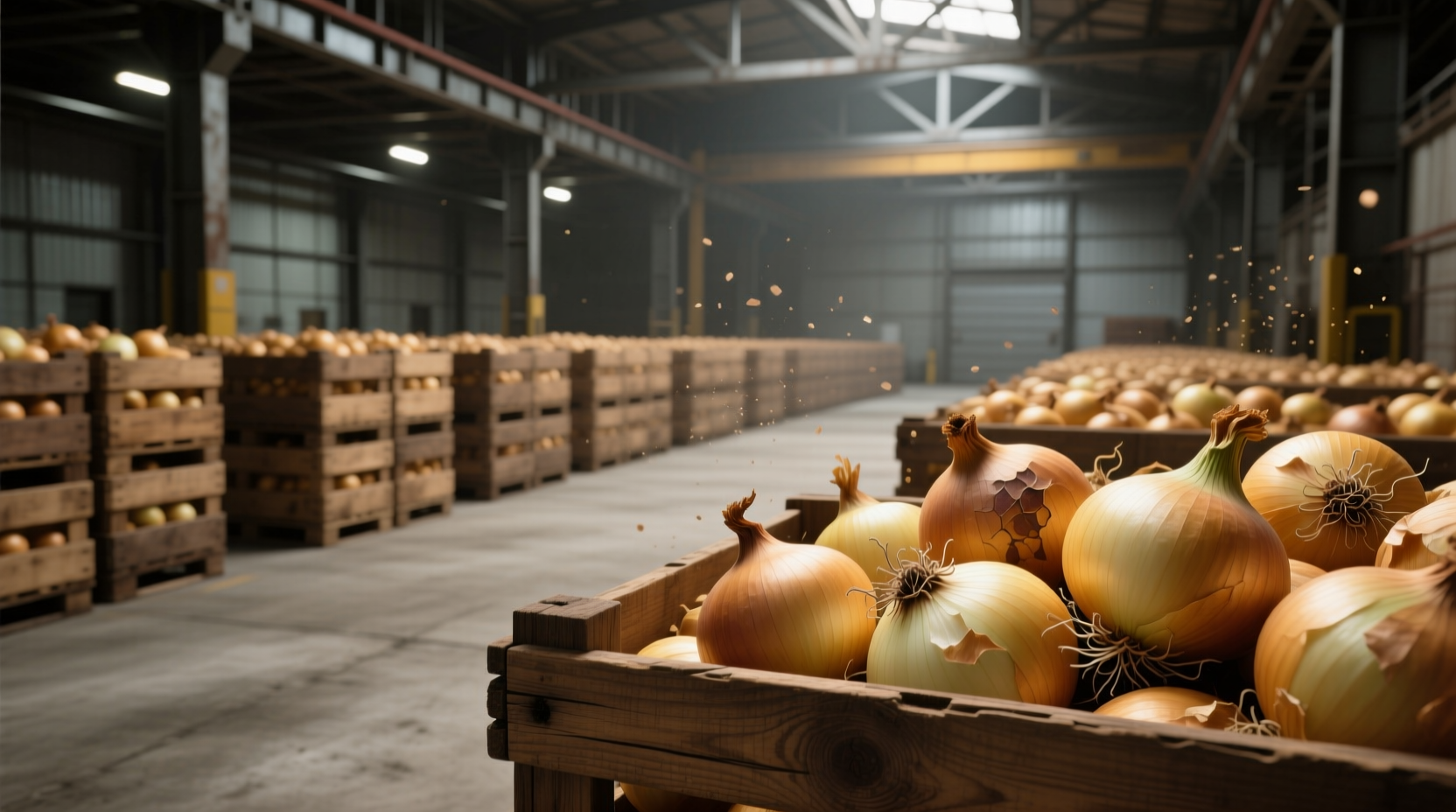Discover science-backed methods to maximize your onion shelf life while preventing spoilage and sprouting. Whether you're storing a farmers' market haul or preserving garden surplus, these practical techniques ensure your onions remain crisp, flavorful, and ready for cooking months after purchase.
Understanding Onion Varieties and Their Unique Storage Needs
Not all onions store equally well. The key to successful onion preservation starts with recognizing which type you're working with:
- Dry bulb onions (yellow, red, white) - Highest storage potential (2-6 months)
- Sweet onions (Vidalia, Walla Walla) - Shorter shelf life (1-2 months)
- Green onions/scallions - Require different moisture management
- Shallots and garlic - Similar but not identical storage requirements
According to USDA agricultural research, dry bulb onions contain only 8-9% water content when properly cured, creating natural preservation. Sweet onions contain 15-20% more moisture, explaining their significantly shorter shelf life.
The Science Behind Successful Onion Storage
Onions spoil through three primary mechanisms: moisture absorption, sprouting, and microbial growth. The ideal storage environment counteracts all three:
- Temperature: 45-55°F (7-13°C) slows metabolic processes
- Humidity: 65-70% prevents both drying out and moisture accumulation
- Ventilation: Airflow prevents ethylene gas buildup that triggers sprouting
- Darkness: Light exposure stimulates sprouting and chlorophyll development
Purdue University's post-harvest research confirms that temperatures below 45°F cause internal discoloration in dry onions, while temperatures above 60°F accelerate sprouting. This explains why refrigeration harms most onion varieties.
Step-by-Step Storage Methods by Onion Type
Dry Bulb Onions (Yellow, Red, White)
Follow these steps for maximum shelf life:
- Cure onions for 2-4 weeks in warm, dry, well-ventilated area if freshly harvested
- Trim roots to 1 inch and remove outer papery skins
- Store in mesh bags, woven baskets, or ventilated containers
- Maintain consistent temperature between 45-55°F
- Check monthly for spoilage and remove affected onions immediately
Sweet Onions
Due to higher moisture content:
- Refrigerate in the crisper drawer with high humidity setting
- Place in a paper bag with ventilation holes
- Use within 4-6 weeks for best quality
- Never store near ethylene-producing fruits like apples
Green Onions/Scallions
Preserve freshness with these techniques:
- Trim root ends and place upright in a glass with 1 inch of water
- Cover loosely with a plastic bag
- Change water every 2-3 days
- Store in refrigerator for up to 2 weeks

Common Onion Storage Mistakes and Their Consequences
| Mistake | Consequence | Prevention Method |
|---|---|---|
| Storing with potatoes | Accelerated sprouting and spoilage | Store in separate locations |
| Refrigerating dry onions | Moisture absorption and soft spots | Store at cool room temperature |
| Using plastic bags | Condensation buildup and mold | Use mesh or paper bags for ventilation |
| Washing before storage | Moisture-induced rot | Store completely dry; clean only before use |
Research from the University of California's Agriculture and Natural Resources department shows that storing onions with potatoes increases spoilage rates by 47% due to ethylene gas exchange between the two vegetables.
How to Recognize Spoiled Onions
Identify compromised onions before they affect your entire storage batch:
- Visual signs: Dark spots, mold growth, green sprouts exceeding 1 inch
- Texture changes: Soft or mushy areas, excessive dryness
- Smell test: Sour or unpleasant odor indicates advanced spoilage
- Internal inspection: Brown or black layers when cut open
According to FDA food safety guidelines, discard onions showing significant mold growth or soft spots, as pathogens can spread internally even when surface appearance seems acceptable.
Advanced Techniques for Extended Storage
Freezing Onions
Ideal for cooked applications:
- Chop and spread on baking sheet before freezing
- Transfer to airtight containers after flash freezing
- Use within 6-8 months for best quality
- No need to thaw before cooking
Dehydrating Onions
Preserve for year-round use:
- Slice uniformly to 1/8 inch thickness
- Dehydrate at 135°F until brittle (6-12 hours)
- Store in vacuum-sealed containers with oxygen absorbers
- Reconstitute with hot water when needed
Pickling for Long-Term Preservation
Create shelf-stable options:
- Use proper vinegar concentration (5% acidity minimum)
- Process in boiling water bath for proper canning
- Store in cool, dark place for up to 18 months
- Refrigerate after opening
Seasonal Storage Considerations
Successful onion storage varies by season and climate:
- Summer storage: Prioritize cool basement areas or interior closets away from heat sources
- Winter storage: Avoid unheated garages that may drop below freezing
- Humid climates: Increase ventilation and check more frequently for moisture issues
- Dry climates: Monitor for excessive drying and consider slightly higher humidity storage
Extension specialists at Cornell University note that seasonal temperature fluctuations cause the most storage failures, emphasizing the need for consistent environments regardless of external conditions.











 浙公网安备
33010002000092号
浙公网安备
33010002000092号 浙B2-20120091-4
浙B2-20120091-4